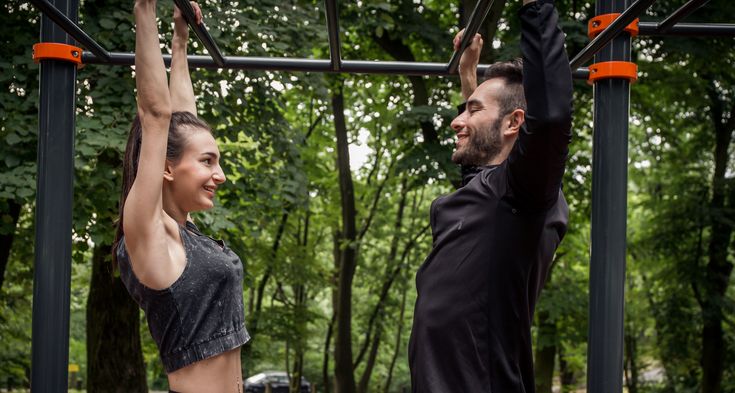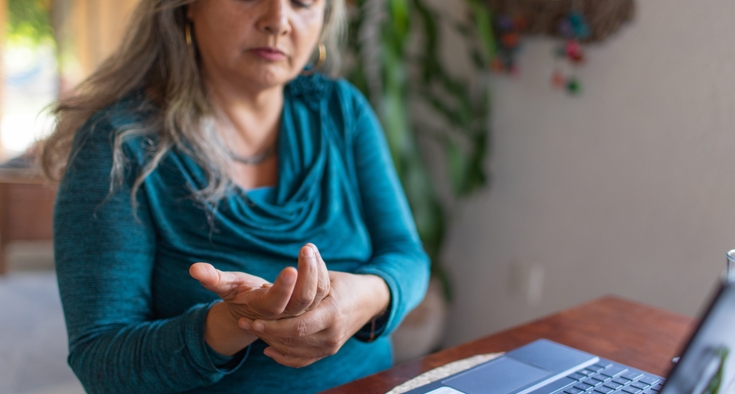If you can’t hang from the playground monkey bars – or a pull-up bar at the gym – for one minute (for men) or 30 seconds (for women), you might want to think about improving your grip strength. Read to the end for more details on this.
Recent research shows that grip strength is linked to longer, healthier lives, while reduced strength is linked to more health problems.
“What’s likely going on here is that your grip strength is an indicator of how healthy you are in general,” said Dr. Eric Angermeier, orthopedic hand and wrist surgeon and co-founder of the Hand Institute of Charleston. “Several factors set you up for better wrist strength, including good nutrition and regular exercise and muscle-strengthening, which also influence how healthy you are overall.”
Angermeier answers more questions about grip strength.
Live your best possible life
Find the orthopedic care you deserve
How can you build grip strengthening into your exercise plan?
Maintaining a strong grip is a good part of any strengthening program. The recommendation isn’t to solely focus on grip strength. That’s because any formal strength-training program will typically include exercises that strengthen grip, where you’re putting pressure through your hands or gripping an object. That includes:
- Using resistance bands for upper-body work.
- Using upper-body machines at the gym.
- Lifting free weights, like dumbbells.
- Practicing calisthenic-type body weight exercises like pullups or pushups.
- Doing yoga.
What hand or wrist conditions might hold you back from properly improving your wrist strength, as well as your overall health?
If you have arthritis, carpal tunnel syndrome or an improperly healed wrist or hand injury, this won’t just impair your hand function. It’s going to impair your ability to lift weights in the gym or play tennis or do activities that you enjoy doing, which can then impact your heart health and weight, for example.
It can also hurt your mental health. So if hand and wrist surgeons can help patients get back to the activities they enjoy, that can positively affect their overall health.
What symptoms can point to these possible hand and wrist problems?
Carpal tunnel syndrome is one of the most common problems that affects grip strength; this is when a nerve in your wrist gets pinched, making your hand feel tingly, numb, or weak. You might notice an increased tendency to drop things, or you might notice that your hand gets tired more easily with an activity like typing on a computer. It’s important to get carpal tunnel treated early, because your wrist can get weaker over time.
A combination of pain and weakness, however, is associated with arthritis. It’s common for women in particular to get arthritis at the base of the thumb, so it hurts to grip and pinch objects. When people start avoiding those motions because they’re uncomfortable, the wrists can get weaker.
What physical therapy tools can improve grip strength while addressing hand and wrist pain?
There are several types of tools that can help:
- Silly putty to knead and press with your fingers
- Traditional, spring-loaded grip strengtheners to squeeze
- Stress balls to squeeze
- Resistance bands to stretch outwardly
Another option is to work on therapeutic stretching and massage one-on-one with a physical therapist.
What if your hands start to hurt when you’re working on your grip strength?
If you’re using physical therapy tools or engaging in exercises so often that it’s making your hands hurt, you’re doing too much. But routinely including these tools or exercises in your exercise plan is a good idea for any age, especially once you’re in your 30s or older. That’s what the studies are pointing to: As we age, it’s important to maintain our grip strength.
Should EVERYONE be able to hit the 30-second or 1-minute mark?
Here's a little more context from Dr. Angermeier
One minute for men and 30 seconds for women is a loose guideline. Age, weight, other injuries and level of training factor in.
I think young men in their 20s and 30s should probably be able to do closer to two minutes if they have trained for a while. Women in that age range may be closer to 90 seconds.
Don't worry. Most gyms have an assisted pull-up machine that can help partially support body weight while hanging for those that feel intimidated by full body weight hanging when they first start.
Also, some of us may have rotator cuff injuries, arthritis, or other conditions that may prohibit hanging by the upper extremities. So if you fall into one of those categories, experience pain when you try or just have a concern, speak with your doctor first.
The most important thing: Keep exercising and do everything you can within reason to work on your strength.











